|
Dwarf Mexican Petunia (Ruellia brittoniana)
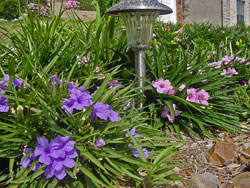
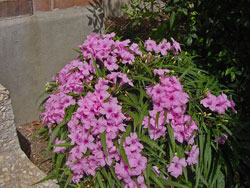
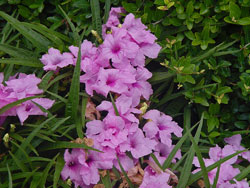
The widely adaptable Dwarf Mexican Petunia (Ruellia brittoniana) has been named a Texas Superstar™ by Texas A&M University. The tall upright, dark green plants with lance-shaped leaves and bright purple, tubular flowers are in full bloom in the hottest part of the summer and show no signs of being neglected even if planted in a less than optimum location.
Mexican petunias are very adaptable and will tolerate wet and dry soils. They prefer full sun but will tolerate shade; however, since flowering is light-related, the plants will flower less in shade. Mexican petunias and their cultivars are perennial and will remain green under conditions of light frost. However, the foliage will die when a severe frost occurs, and the plant will go dormant until spring.
Although Mexican petunias are drought-tolerant once established, they perform best with regular irrigation during droughts and with regular feeding of high phosphorus fertilizers. They are disease- and insect-resistant and only rarely bothered by snails and caterpillars.
One limitation of the large-growing plant is that it can be aggressive in well-cared-for situations, spreading by both seed and rhizomes which can be a pest in rich garden soil. The introduction of a dwarf Ruellia was a great step in solving this "problem". The dwarf, less-aggressive version of the species is 'Katie' dwarf Ruellia (sometimes called 'Nolan's dwarf'). About 6 inches in height, it works nicely in an informal front-of-the-border grouping or as a groundcover in narrow spaces. 'Katie' needs no deadheading, and will continue to flower all season long, and is just as tough as its species parent, able to grow in hot, dry neglected spots. In good soil, the plant will reseed true, but is not as invasive as others in the species. Recently, a dwarf pink version of 'Katie' called 'Bonita™' was patented and introduced by Color Spot Nurseries.
Daylily
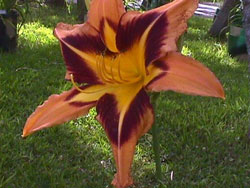
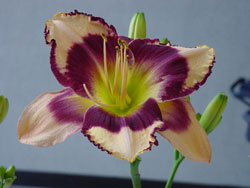


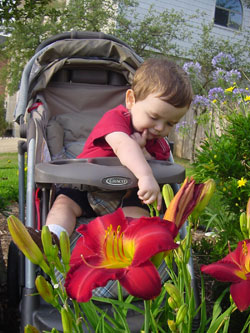
Plant these bare-root perennials as soon as possible in the spring. They’re eager to grow, can take light frost, and need water and sunlight to stay healthy. If necessary, store in a plastic bag in the refrigerator for a few days or “heel in” briefly in moist sand or soil in a shady spot.
Daylilies like lots of sun but most bloom well in light shade, too, and often prefer it in the South. Loamy, well-drained soil suits them best, but they’re adaptable and should do fine in any soil that’s not too wet or dry.
Plant 18-24 inches apart (to leave growing room for future years) with the crown (where the foliage meets the roots) no more than one inch below the soil surface. Dig a hole big enough to fit the roots comfortably, mound soil in the center, set the plant on top, and spread the roots out down the sides of the mound. Fill in and firm soil around roots, making sure the crown ends up no more than one inch deep. Water well.
Water regularly, especially the first year and from spring till flowering in future years. First-year plants usually bloom sparsely – if at all – concentrating instead on developing a strong root system. Deadhead (remove) spent blooms daily for a neater look and, to increase bloom the following year, remove any seedpods that may form.
After bloom, normal senescence (aging) may cause foliage to subside, yellow, or turn brown at the tips. If this bothers you, feel free to trim it a bit or even cut the foliage to the ground completely – though not the first year! With good Daylilies are hardy perennials and winter protection is rarely needed. In spring, remove dead foliage, fertilize if indicated by a soil test, and resume watering.
See: http://plantanswers.com/flowers/daylilies/
Pomegranates
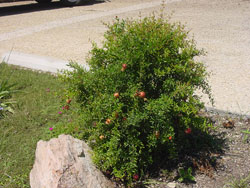
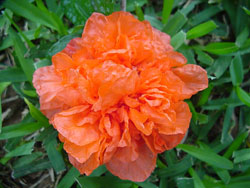
See under heading of “Pomegranates” at: http://plantanswers.com/resources.htm#fruit
|



